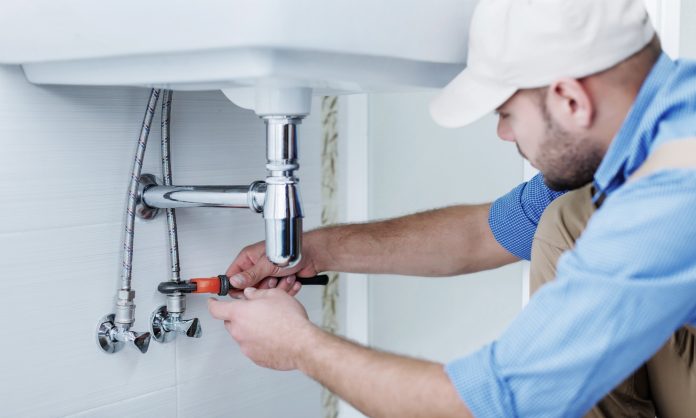Bathroom remodeling is one of the top home renovation projects. Are you thinking of remodeling your bathroom?
You spend a lot of time in the bathroom so an upgrade makes sense. It’s a good idea to make it more comfortable and efficient.
You can hire a professional or take on the project yourself. Whichever route you take, you must keep one thing in mind.
The remodeling job must meet plumbing code standards. It’s critical that you do so. By meeting plumbing codes, you can avoid major issues.
Continue reading to learn how you can meet plumbing codes for your bathroom remodel.
Why Should You Meet Plumbing Code Standards
You got all these bathroom remodel ideas. You’re ready to jump in and start the project. It’s a good idea to brush up on residential plumbing code requirements.
Plumbing code standards are one of many considerations that go into this type of project. This might seem like a simple project, but you need to do it right.
Why should you use plumbing codes? By using them, you can ensure you get quality.
Failure to follow these codes can lead to property damage. The last thing you want is to have to spend money to fix a broken pipe.
Common Plumbing Code Requirements
It’s important you follow plumbing codes. The most common ones focus on venting. This relates to how pipes carry waste and water out of the house.
Properly installed pipes will do the job. To achieve this function, there must be an air passageway behind the water.
Bad pipes will run sluggishly. These can make gurgle sounds. Another issue is the release of noxious fumes into the house.
In addition to meeting plumbing code standards, you should consider buying high-quality parts. Want to buy high-quality products to use in your bathroom remodeling project? Check out the product this company sells.
Sink Spacing and Design
When installing sinks, you need to keep in mind to space them at least four inches from sidewalls. Why this amount of spacing? Sinks produce water, so the water should be away from the wall.
There should be at least 21 inches of clearance in front of sinks. You can put two sinks next to each other. If you do, they have to be at least four inches apart from each other.
If you plan to place a sink next to the bathtub, there’s a code you must follow. Sinks should be at least four inches away from bathtubs.
Toilet Spacing and Design
There are plumbing codes that apply to toilets. Leave at least 21 inches of clearance in front of the toilet. The ideal length is 30 inches as it offers more comfort.
Fixtures and Pipes
Fixtures in the bathroom shouldn’t be placed too close together. There might not be a lot of space in your bathroom, but you must follow this code.
Before you install pipes, you must find the correct pipe sizes. This includes drains, vents, and supply lines.
You also need to determine the correct pipe materials. You might want to consider rigid copper pipes for supply lines. For drain lines, PVC is ideal.
Is there an issue with the water pressure? There are several things you can do to get adequate water pressure.
You might need to replace an existing globe shutoff valve. You can use a full-bore ball or gate valve. These will not impede the flow of water.
What if the water pressure is low? A booster pump might take care of the problem. For high water pressure, you can install a pressure-reducing valve.
Plumbing Codes for Pipes
When working with pipes, you must determine supply fixture units. You can look this information up on the Internet. Print the chart and refer to it as you complete your DIY bathroom remodel.
You must use the units with branch pipes. These are the pipes that run from the distribution pipes to the fixtures.
A 1/2-inch pipe works with most fixtures. For a hose bib or a water heater, you can run a 3/4-inch pipe.
There are supply tubes you need to work on. These are flexible lines. They can run from the stop valve to a faucet or fixture.
Running 1/2-inch supply lines to all fixtures is the general rule. The exception to this rule is toilets and bathroom sinks. For these fixtures, you need to use 3/8-inch tubes.
Sizing drain pipes is a must. Your toilet might connect to a drain pipe. If that’s the case, the pipe must be at least three inches.
You must also consider the fixture trap size. For the bathroom sink, you need to go with a 1-1/4-inch trap.
Showers and floor drains use a different trap size. These use a 2-inch one. All other fixtures rely on 1-1/2-inch traps.
Check for Leaks
Keep in mind that you should check for leaks during your bathroom remodeling project. After installing pipes, you must make sure they don’t leak. Fix the leaks because if you don’t, there’s a chance they can cause flooding later on.
Follow Plumbing Code Requirements for Your Bathroom Remodeling Project
If your bathroom is falling apart or is old, it’s time to do a bathroom remodel. You must follow plumbing code standards.
By following plumbing code requirements, you’ll get a new bathroom that looks great. Above all, you can be comfortable in your new bathroom.
Make sure to explore the rest of our blog to continue reading more great articles.










